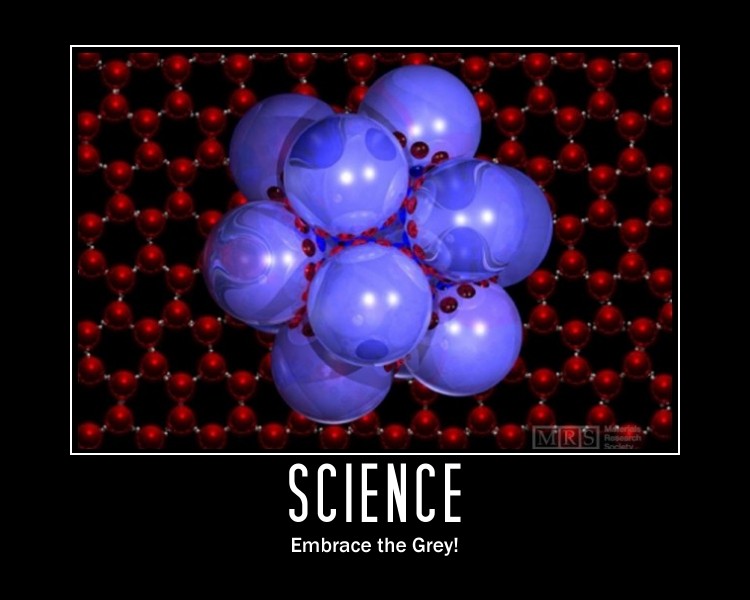I write this having been guilty of it myself in the past. The nature of the sports science is not perfectly black and white with distinct lines of separation. Two topics that are especially grey are Energy System Development (ESD) and Functional Movement Systems (FMS), which at times can be associated with mass confusion. Applying these concepts often frustrates coaches, and ultimately, they end up ignoring these crucial ideas altogether, returning to their programing status quo. Many times their frustration is derived from their rigid mindset, which keeps them from reaping the benefits of new ideas.
Not every paradigm, concept, or new piece of information can be filtered down into an “if-then” excel sheet. Many are confused because of their discomfort with ambiguity and equivocality. They cope by relegating theories into nice, little rigid boxes which can yield negative results or poor applications because some concepts are too complex to be distilled to simple categories. Training and science is grey, not black and white. Try and be a quantifier and qualifier, not just the latter.
Take, for example, energy systems training. Many people assume that Patrick Ward, Dave Tenney, Joel Jamieson, Mark Mclaughlin, Cal Dietz, and others all understand bioenergetics and program “conditioning” exactly the same . False. While the framework of bioenergetics may result in them having similar physiological elucidations to people, they each apply this knowledge differently. If you gave them all the same person to train, each program would be unique as coaches may prioritize the same concepts and principles in different fashions – potentially very different – but can share commonalities resulting from similar overall appreciation of the science.
On a random side note, is the topic of heart rate variability (HRV). Not that it’s inherently connected with ESD, but there is a lot of context being lost with HRV obsessions today and thus more confusion. Indeed it is the best biomarker we have yet and as a profession we’re taking positive steps, but, it is still just a single window into the athletes functioning. You can measure HRV forever and still have a bad program yielding no results. It’s possible to have fantastic HRV readings and still be weak, slow, poorly conditioned, and unathletic. Creating profiles from the amalgam of HRV, other biomarkers, and performance markers is the goal and what tells you if what you’re doing is working (from a programming standpoint). Therefore while HRV is indeed key, it’s only one of the keys on your keychain. Here's a very practical roundtable discussion on HRV and training. Pay particular attention to Joel Jamieson's comments.
In terms of functional movement screening/assessment, the same indefiniteness or imperfectness applies. There is no perfect number of sets and reps you should perform of rolling exercises or the shoulder mobility correctives etc. etc. Talk to many of the FMS experts and you shouldn’t be surprised if they go about their assessment or correctives differently when by themselves. What should be obvious is they all might adhere to the same principles but have different paths to get the same end result.

Assimilation Troubles
When coaches acquire new information some will experience anxiety assimilating these foreign concepts with their pre-existing paradigms and fear applying it “wrong” or yielding no results. In turn, they seek out an expert inquiring, sometimes demanding, a set and rep protocol or an if-then algorithm to follow. Understandably, we have all been here at one point. Eventually we allow ourselves the freedom to make up our own application based on our own understanding of the science.
Point being, you need to study the science in order to understand the limitations and thus feel confident about your application and the grey areas. Ever heard – “We don’t rise to the level of our expectations; we always fall to the level of our education/training.” It’s true. If you find yourself constantly harassing/annoying experts with rigid black and white questions you might want to ask yourself if you need to be more qualitative and less quantitative and if you’ve studied the science of that topic or are you just being lazy and asking questions because you don’t care to do more referencing first.
Energy system training, movement assessment, and correctives are not perfect sciences (I’m not sure what is) so appreciate the fact that no one has all the answers and no one understands these concepts perfectly. There are no absolute answers to questions like “how many reps should we do for alactic capacity work?”, “how do I determine lactate threshold without going to a laboratory?”, “how long should manual therapy treatments last?”, “what is the best movement assessment tool?”, “how many times should cardiac output work be done per week?”
If you find yourself frequently asking these types of questions it is probably because you have not studied the subject enough to feel comfortable about the grey and your application. Don’t be lazy. Study first and you’ll likely answer your own questions. From there, whatever questions are left over will probably be less superficial and more meaningful in the overall scheme of things.
So Why Do Products/Algorithms Exist Then?
So, if training and science are grey, then why have many industry leaders and sports scientists created algorithms and if-then type of products or progressions to follow (i.e. the FMS/SFMA, books about ESD with specific protocols)? Believe it or not, those materials were created because said experts, in all their wisdom, already anticipated some people would be uncomfortable with qualitative thinking and would be demanding quantitative measures. The experts saved anticipated coaches’ angst with the indefiniteness of science and training by developing “best fitting” algorithms or if-then type of protocols to mollify the cries of those who won’t study the science for themselves and ascribe to rigid set and rep outlines.
The functional movement screen has been around for years and yet people are still confused, accusing Gray Cook of “being vague and circuitous.” In reality, Gray and his cohorts have been applying the neurological concepts that underpin the FMS for years with great success while the rigid black and white quantifiers are still complaining that Gray hasn’t told them to do 3 sets of 10 reps of this or that particular corrective. The latter group simply sits back and waits to be told what to do instead of taking initiative.
The aforementioned applies to bioenergetics as well. If you have ever read Joel Jamieson’s book on ESD, you’ll notice how the programming examples are very broad. For the same protocol he writes instructions like “20-60 seconds per exercise” and “6-10 sets per series with 2-6 series per session”, etc. Some will read these directions and experience massive anxiety because they notice that 20sec of an exercise for 2 series of 6 sets is different from 60sec of an exercise for 6 series of 10 sets. This leads readers to email Joel and ask “so should I do 20 seconds or 60 seconds?” without considering that if Joel himself thought it really mattered he would not have written it that way or he would of included it under different protocols.
More importantly, if one just took the time to study bioenergetics more in depth, they would view many of their own questions as trivial. So ask yourself, before asking someone else a question – am I just obsessing over a superficial detail that really doesn’t have an answer? If I cultivated my understanding of the basic principles and fundamental science behind this topic, would I even have this question? Am I being rigid or black and white with my thinking? Am I being lazy and just asking questions without referencing more material first?
Bottom line – few people are comfortable with abstract ideas and qualitative thinking. Most just want someone to tell them “do 3 sets of 10 reps.” However, there is a simple solution to this pitfall. Study the science; make up your own application, test, retest, and study some more. If you’re obsessing over superficial pieces it is probably a sign you need to revisit the basic science and gain a greater depth of understanding on the topic.
Most of the products and books created on FMS and ESD were done so (from a theory standpoint) to satisfy the cries of coaches who can’t handle being given principles and need to hear an exact number to follow. They were not made because the authors expect you to follow them 100% to the T. The creators themselves change their methods over the years (from continued study) and may not use those exact protocols anymore. Training and science is grey and you’re confused because you want it to be black and white. I take my own advice.

Training and science is unique to each and every situation….like a snowflake, no one ever identicle.
Good post Sam!
Thanks, Nick. It’s definitely a message we need to echo.
Regards,
Sam
Sam,
Great article.
Your sentiments mimic mine to a T.
Being in a bit of a programming rut as of lately, this was a great article for me to read and get out back to my principles.
Best,
Ryan Williams